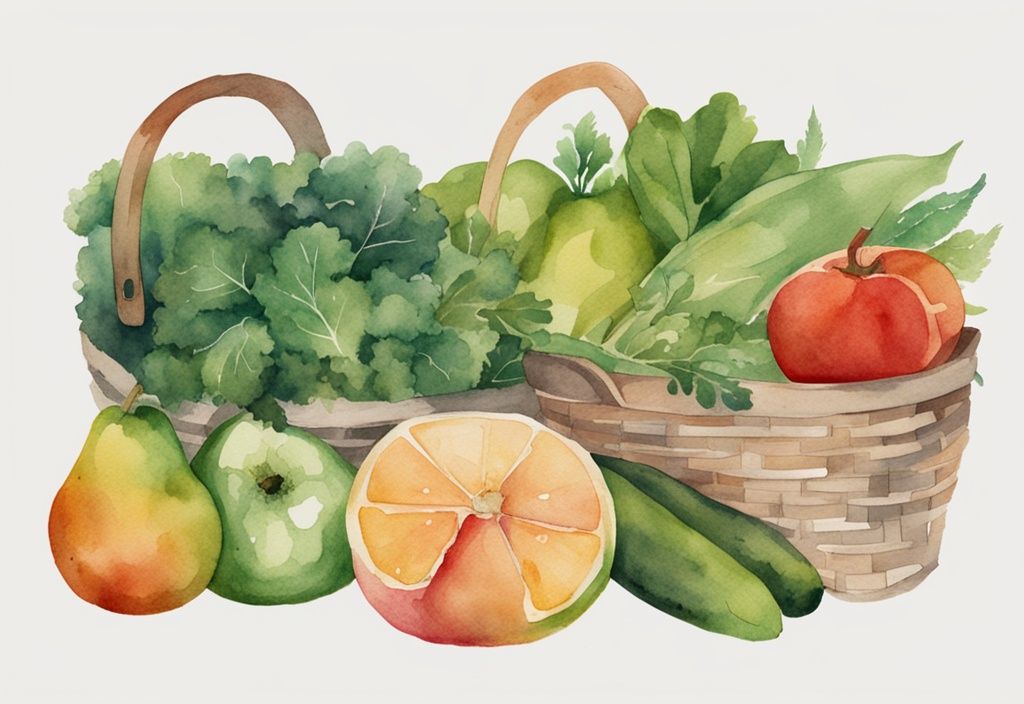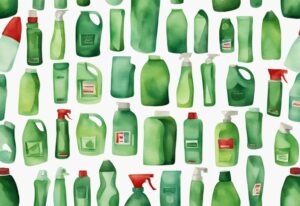Is Lyocell Toxic? Truth About this Fabric
Have you ever wondered, “Is lyocell toxic?” As a conscious consumer, it’s natural to question the safety of the products we use daily. Lyocell, a fabric derived from natural sources like eucalyptus and bamboo, has been touted as a non-toxic alternative. But is it as safe as it’s made out to be?
In this article, we’ll delve into the nitty-gritty of lyocell’s production process, its hypoallergenic and antimicrobial properties, and its environmental impact. We’ll compare it to other fabrics and examine whether it truly aligns with a non-toxic lifestyle.
Join me, Olivia Green, as we explore the facts and debunk myths surrounding this innovative material. Let’s empower ourselves with knowledge and make informed choices for our health and our planet.
Understanding Lyocell: What is It?
Lyocell is a remarkable cellulose-based fiber, crafted from the wood pulp of trees such as eucalyptus, oak, birch, and bamboo. This man-made fiber stands out due to its production process, which utilizes a non-toxic solvent spinning technique. Unlike many synthetic or semi-synthetic fabrics, lyocell maintains the natural properties of cellulose, contributing to its reputation as a sustainable and eco-friendly textile option.
The question “is lyocell toxic” often arises, but lyocell’s production process ensures it remains a non-toxic choice. The fiber’s creation involves breaking down wood cellulose with a non-toxic solvent, setting it apart from other textiles that rely on harmful chemicals. This method not only preserves the natural integrity of the cellulose but also aligns with environmentally conscious practices.
Lyocell’s eco-friendly attributes are further enhanced by its ability to decompose naturally, leaving no harmful residues behind. This biodegradability, coupled with its sustainable production process, makes lyocell a preferred choice for those seeking non-toxic and environmentally responsible textiles. As a result, lyocell is increasingly favored in the fashion and home textile industries, offering a safe and sustainable alternative to more traditional fabrics.
Is Lyocell Toxic for Personal Use?
Lyocell has become a staple in my journey towards non-toxic living, and I can confidently say it’s a safe and non-toxic textile option for personal use. This man-made fiber, derived from natural cellulose, offers a gentle alternative to many other fabrics. Its production process employs non-toxic chemicals, ensuring that the resulting material is free from harmful substances. This makes lyocell an ideal choice for those concerned about toxicity in their clothing and home textiles.
One of the standout features of lyocell is its hypoallergenic nature. For individuals with sensitive skin or allergies, lyocell provides a comfortable and irritation-free experience. Unlike some fabrics that may contain harsh dyes or chemical finishes, lyocell maintains its purity, reducing the risk of allergic reactions. Its soft texture and breathability further enhance its suitability for people with skin sensitivities, making it a preferred option for bedding, clothing, and other personal items.
In summary, when considering the question, “Is lyocell toxic?” the answer is clear: lyocell is a safe, non-toxic, and hypoallergenic fabric choice, offering peace of mind for those seeking healthier, skin-friendly textile options.
Lyocell’s Hypoallergenic and Skin-Friendly Properties
Choosing textiles that are kind to your skin and the environment can sometimes feel overwhelming, but let me share a little secret: lyocell is a gem in the world of non-toxic fabrics. I’ve been on this journey myself, and I can tell you, lyocell stands out for its hypoallergenic qualities. This fiber is crafted with such care that it significantly reduces the risk of allergic reactions, making it a dream come true for those of us with sensitive skin.
Now, you might be wondering, is lyocell toxic? Let me reassure you, lyocell is celebrated precisely because it avoids the harmful dyes and bleaches that are often culprits in skin irritation. These additives, commonly found in other textiles, can cause discomfort and even health issues. By steering clear of these irritants, lyocell provides a gentle, skin-friendly alternative that feels like a soft embrace.
In my own quest for a healthier lifestyle, I’ve found that lyocell is not just about comfort—it’s about peace of mind. Knowing that my clothing and bedding are free from harsh chemicals makes a world of difference. This is why lyocell is a preferred choice for those who prioritize both health and comfort in their textile selections. It supports a non-toxic lifestyle and enhances overall well-being, making every day feel a little bit brighter.
Antimicrobial Properties of Lyocell
Lyocell, a cellulose-based fiber, has been capturing my attention lately, not just for its eco-friendly production but also for its intriguing antimicrobial properties. Now, I know the question “is lyocell toxic” might pop into your mind. Let me assure you, lyocell is widely regarded as non-toxic and perfectly safe for personal use. This fiber is crafted from wood pulp and processed with a non-toxic solvent, making it a sustainable and thoughtful choice for textiles.
I’ve come across some fascinating studies suggesting that lyocell might have antimicrobial qualities. This means it can help inhibit the growth of bacteria and other microorganisms. Imagine the benefits of this in your clothing and bedding—creating a healthier, more hygienic environment. For those of us with sensitive skin or allergies, this can be a game-changer. The antimicrobial properties of lyocell can also help reduce odors and keep fabrics fresh, which is a delightful bonus.
The non-toxic nature of lyocell, coupled with its antimicrobial potential, makes it a standout choice for anyone looking for safer and more sustainable textile options. As we all become more conscious of how our choices affect our health and the environment, lyocell emerges as a fabric that truly aligns with these values. It’s a step towards a healthier lifestyle, and I’m excited to share this journey with you.
Potential for Skin Irritation: What You Need to Know
When I first discovered lyocell, I was drawn to its reputation for being non-toxic and eco-friendly. It’s a fabric that aligns perfectly with my commitment to sustainable living. But as I delved deeper into the question, is lyocell toxic, I realized that individual experiences can vary. While lyocell is generally safe for most, some might encounter minor skin irritation or other side effects.
Lyocell’s hypoallergenic properties make it a wonderful choice for those with sensitive skin or allergies. Unlike many other textiles, it doesn’t contain harmful dyes or bleaches, which are often the culprits behind skin irritation. This makes lyocell an excellent option for clothing and bedding, as it minimizes the risk of allergic reactions and skin discomfort.

However, it’s important to remember that no fabric is entirely free from the potential to cause irritation. Personal sensitivities can lead to different experiences with any material, including lyocell. If your skin is particularly sensitive, it might be wise to test a small area before fully embracing lyocell products. This simple step can ensure both comfort and safety.
In conclusion, lyocell is not considered toxic and is generally safe for use. Yet, understanding your skin’s unique needs and reactions is crucial. For those interested in learning about related issues, such as the Avocado mattress lawsuit, it is essential to stay informed. This awareness ensures a comfortable and irritation-free experience with this sustainable fabric. Embracing lyocell can be a rewarding step towards a healthier, more sustainable lifestyle.
How is Lyocell Produced?
Lyocell production is truly a fascinating journey, one that beautifully intertwines sustainability and safety. You might wonder, is lyocell toxic? Let me share how this process addresses such concerns with a blend of innovation and eco-consciousness.
It all starts with the extraction of cellulose from wood pulp. This pulp is sourced from trees like eucalyptus, oak, birch, and bamboo. I remember the first time I learned about this—it felt like discovering a secret garden of possibilities. The cellulose is then dissolved using a non-toxic solvent called N-Methylmorpholine N-oxide (NMMO). This choice of solvent is crucial because it offers a safer alternative to the harsh chemicals used in other rayon production methods.
The use of NMMO ensures that lyocell is not toxic. It efficiently breaks down the wood cellulose without releasing harmful substances. What’s even more impressive is the closed-loop system in which this process operates. Over 99% of the water and solvent are recycled and reused. This not only minimizes waste but also significantly reduces the environmental impact. It’s a wonderful example of how lyocell production supports our planet.
The fibers produced retain their natural cellulose properties, resulting in a fabric that is both biodegradable and sustainable. This method of production ensures that lyocell remains a non-toxic choice for those of us seeking environmentally responsible textile options. I find it incredibly rewarding to know that by choosing lyocell, we’re making a positive impact.
By focusing on these sustainable practices, lyocell production aligns with the growing demand for eco-conscious and non-toxic products. It’s heartening to see how these efforts contribute to a healthier lifestyle and a healthier planet. So, if you’re on a journey towards non-toxic living, lyocell is a wonderful companion to consider.
The Role of N-Methylmorpholine N-oxide (NMMO) in Lyocell Production
N-Methylmorpholine N-oxide (NMMO) is a true game-changer in the world of textiles, especially when it comes to lyocell—a fabric that often raises the question: is lyocell toxic? I remember the first time I encountered lyocell. I was skeptical, just like many of you might be. But diving into the details, I discovered that NMMO is a non-toxic solvent that gently transforms wood cellulose into the soft, durable fibers we know as lyocell. This process is a breath of fresh air compared to traditional rayon production, which relies on carbon disulfide, a chemical notorious for its toxicity.
This shift to NMMO is not just a technical detail; it’s a significant step toward addressing the concerns about lyocell’s safety. The use of this non-toxic solvent is a cornerstone of lyocell’s reputation as an eco-friendly and sustainable textile. It aligns perfectly with the principles of non-toxic living, ensuring that the final product is safe for both personal use and the environment. By swapping out harmful chemicals for NMMO, the production of lyocell minimizes potential risks, reinforcing its status as a non-toxic choice.
In my journey towards a non-toxic lifestyle, I’ve found that the adoption of NMMO in lyocell production is a beautiful example of how industry can prioritize safety and sustainability. This solvent not only helps create high-quality fibers but also keeps the process environmentally responsible. As a result, lyocell stands out as a textile that is not only innovative but also deeply aligned with the values of non-toxic and eco-conscious living.
So, if you’re pondering whether lyocell is toxic, rest assured that its production process, centered around NMMO, is designed with your well-being and the planet in mind. It’s a testament to how we can make choices that are both kind to ourselves and to the Earth.
Lyocell’s Closed-Loop Production System: A Sustainable Approach
When I first stumbled upon lyocell, I was intrigued by its reputation for sustainability. The heart of its eco-friendly nature lies in its closed-loop production system. This innovative approach recycles and reuses over 99% of the water and solvents involved in its creation. It’s almost like a dance of resources, gracefully minimizing waste and reducing the need for fresh inputs.
Now, you might be wondering, “Is lyocell toxic?” This question often pops up, and I totally get it. The beauty of lyocell is in its non-toxic production process. By preventing harmful chemicals from escaping into the environment, it stands as a testament to sustainable textile manufacturing. This closed-loop system not only protects our planet but also aligns with my personal journey towards non-toxic living.

Choosing lyocell feels like a small yet significant step towards environmental stewardship. It’s a choice that resonates with those of us who are passionate about eco-conscious materials. Every time I opt for lyocell, I feel a sense of connection to a larger movement, one that values both personal health and the well-being of our planet.
Is Lyocell Toxic to the Environment?
Lyocell has always intrigued me as an eco-friendly textile option. Its sustainable production process and minimal environmental footprint are truly impressive. The magic happens in its closed-loop system, which efficiently recycles over 99% of the water and solvents used. This significantly reduces waste and minimizes the impact on our precious natural resources.
What sets lyocell apart from other textiles is its avoidance of toxic chemicals. Instead, it uses a non-toxic solvent called N-Methylmorpholine N-oxide (NMMO). This choice highlights a commitment to environmental safety, offering a safer alternative to the harmful chemicals often found in other rayon fibers. It’s reassuring to know that the production process remains clean and sustainable.
Another aspect that I love about lyocell is its biodegradability. It naturally decomposes without leaving harmful residues, unlike synthetic fibers that can linger in the environment for decades. However, it’s essential to consider the energy sources used during its production. Facilities using renewable energy contribute to a lower carbon footprint, while those relying on fossil fuels might have a higher climate impact.
In conclusion, lyocell’s eco-friendly attributes make it a fantastic choice for anyone seeking sustainable textile options. Its production process, reliance on non-toxic chemicals, and biodegradability all contribute to its reputation as a low-impact material. It’s a viable alternative to more environmentally damaging textiles, and I find that incredibly encouraging. Choosing lyocell feels like a step towards a healthier planet and a more sustainable lifestyle.
Lyocell vs Other Textiles: Rayon, Modal, and Polyester
As someone who has journeyed through the maze of textile choices, I can tell you that lyocell truly shines in the fabric world. Its production process is not only environmentally friendly but also non-toxic, which is a huge relief for those of us concerned about what touches our skin. Unlike rayon and modal, lyocell doesn’t rely on toxic-chemical synthesis. This makes it a safer option for both personal use and our beloved planet.
Rayon and modal often involve harmful chemicals that can pose risks to human health and contribute to environmental pollution. I remember the first time I learned about this—it was a wake-up call. In contrast, lyocell is produced using a non-toxic solvent spinning technique. This method retains the natural cellulose properties of the wood pulp from which it’s derived. It’s reassuring to know that lyocell is not only non-toxic but also a sustainable choice.
When I compare lyocell to synthetic fibers like polyester, the environmental benefits are clear. Polyester production heavily relies on petrochemicals, which contribute to pollution and the depletion of non-renewable resources. Lyocell, however, is derived from renewable wood sources and is biodegradable. It decomposes naturally without leaving harmful residues. This aligns perfectly with the growing demand for sustainable textiles, as more of us become conscious of the environmental impact of our choices.
By choosing lyocell, you can reduce your ecological footprint and support a more sustainable textile industry. It’s empowering to know that our choices can make a difference. In conclusion, lyocell’s non-toxic production process and eco-friendly attributes make it a superior choice compared to rayon, modal, and polyester. Its ability to offer a sustainable and safe alternative highlights the importance of considering the environmental and health impacts of textile choices. Together, we can make informed decisions that benefit both our health and the planet.
The Environmental Benefits of Lyocell
Lyocell has become a personal favorite of mine, especially in my journey towards a more sustainable lifestyle. Its biodegradable nature is a game-changer. Unlike those pesky synthetic fabrics that linger in landfills, lyocell breaks down naturally, leaving no harmful residues. This makes it a fantastic choice for anyone, like me, who is passionate about reducing waste and embracing eco-friendly values.
What truly sets lyocell apart is its production process. It uses significantly fewer harsh chemicals than traditional textiles. The process involves a non-toxic solvent, which means the fiber retains its natural cellulose properties without introducing harmful substances into our environment. This not only minimizes chemical pollution but also ensures the fabric is safe for us to use.
When I first asked myself, “is lyocell toxic?” I was relieved to find the answer is a reassuring no. The closed-loop production system used in making lyocell recycles over 99% of water and solvents. This drastically reduces waste and conserves resources, showcasing lyocell’s commitment to sustainability. For those exploring sustainable beauty products, you might wonder, does Native shampoo help with dandruff and align with eco-friendly practices? It’s a responsible choice for anyone who cares about the planet.
By choosing lyocell, you’re not just picking a fabric; you’re making a statement. You’re supporting practices that prioritize environmental health. Its biodegradable properties and minimal chemical use mean that lyocell respects both our needs and the planet’s. It’s a small step with a big impact, and together, we can contribute to a more sustainable future.
Potential Environmental Concerns with Lyocell
As I delve into the world of sustainable textiles, the question “is lyocell toxic” often crosses my mind, extending beyond personal safety to its environmental impact. Lyocell, with its eco-friendly reputation, is produced using a closed-loop system that recycles water and solvents. However, the energy sources powering this process can vary, affecting its overall environmental footprint.

I’ve discovered that in regions where production facilities depend on fossil fuels, the environmental benefits of lyocell might be compromised. This reliance on non-renewable energy can lead to increased greenhouse gas emissions, potentially offsetting the sustainable aspects of lyocell’s production. While the process itself minimizes chemical toxicity, the broader environmental impact is significantly influenced by the energy infrastructure.
To truly embrace lyocell’s non-toxic and sustainable potential, it’s essential to consider the entire lifecycle of the product. From sourcing raw materials to the energy consumed during production, every step matters. By choosing manufacturers who utilize renewable energy, we can ensure that lyocell remains a genuinely eco-friendly textile choice.
So, while lyocell isn’t toxic in terms of chemical use, its environmental impact can vary. This highlights the importance of transparency and responsible energy use in its production. Together, we can make informed choices that benefit both our health and the planet.
Transparency and Greenwashing: Ensuring True Sustainability
When I first started exploring whether lyocell is toxic, I realized how crucial transparency in its manufacturing process is. Genuine sustainability isn’t just a buzzword—it’s about openly sharing production methods, materials, and environmental impacts. This openness empowers us to make informed choices about the textiles we bring into our lives.
Yet, the challenge of greenwashing is real. Some brands might ride the wave of lyocell’s eco-friendly reputation, making sustainability claims without full transparency. This can easily mislead us into thinking we’re buying environmentally responsible products, even when the production practices might not match those claims.
To navigate this, I always look for brands that offer detailed insights into their lyocell production processes. It’s about understanding where raw materials come from, ensuring non-toxic solvents are used, and checking if closed-loop systems are in place to minimize waste. By demanding this level of transparency, we can feel confident that the lyocell products we choose are genuinely sustainable and not harmful to the environment.
FAQ
Exploring the world of lyocell can raise many questions, especially when considering its safety and environmental impact. Here, we’ll delve into some common inquiries about lyocell, focusing on its non-toxic nature and benefits for sustainable living.
Is lyocell biodegradable?
Absolutely, lyocell is biodegradable. I remember the first time I learned about its ability to decompose naturally. It was like a lightbulb moment, realizing how this fabric aligns with eco-friendly living. It breaks down without leaving harmful residues, which is a huge plus for anyone committed to sustainability.
Can lyocell cause allergies?
Lyocell is generally hypoallergenic. However, in my journey to non-toxic living, I’ve discovered that individual reactions can vary. While it’s rare, some people might experience minor skin irritation. It’s always a good idea to test a small patch if you’re concerned.
How does lyocell compare to cotton in terms of environmental impact?
When I first compared lyocell to cotton, I was amazed by its lower environmental footprint. Thanks to its closed-loop production process, lyocell uses minimal pesticides and irrigation. This makes it a standout choice for those of us looking to reduce our environmental impact.
Are there any harmful chemicals in lyocell clothing?
One of the reasons I love lyocell is its non-toxic nature. The production process uses non-toxic chemicals, ensuring that the fabric remains free from harmful dyes or bleaches. This means you can wear lyocell clothing with peace of mind, knowing it’s safe for both you and the planet.
Conclusion
In my journey towards embracing sustainable and safe textiles, I’ve found lyocell to be a truly remarkable option. You might wonder, “is lyocell toxic?” I can confidently assure you, it is not. This innovative fiber is crafted using non-toxic chemicals, ensuring it remains safe for personal use. Its production process is a standout for its environmental consciousness, employing a closed-loop system that minimizes waste and recycles over 99% of the water and solvents used.
Lyocell’s eco-friendly attributes go beyond its production. It is biodegradable, decomposing naturally without leaving harmful residues. This makes it a responsible choice for anyone concerned about environmental impact. Unlike other textiles that rely on harsh chemicals, lyocell maintains its integrity as a non-toxic fabric, free from harmful dyes and bleaches that can cause skin irritation.
As a sustainable alternative, lyocell offers a viable option for those of us looking to reduce our ecological footprint without compromising on quality or safety. Its hypoallergenic properties further enhance its appeal, making it suitable for those with sensitive skin or allergies. When compared to other textiles like rayon, modal, and polyester, lyocell’s production process is notably more environmentally friendly, avoiding toxic chemical synthesis.
In conclusion, lyocell is a testament to the possibilities of producing textiles that are both safe for personal use and kind to the planet. Its non-toxic nature and sustainable production methods make it a preferred choice for conscious consumers. By choosing lyocell, we can make informed decisions about the fabrics we incorporate into our lives, benefiting both our health and the environment.
Hi, I’m Olivia Green, the voice behind nontoxicways.com. I’m passionate about helping you make the shift to a healthier, non-toxic lifestyle without feeling overwhelmed. I love sharing my personal journey, from small changes to big transformations, along with practical tips that make it all feel doable. My goal is to inspire and guide you toward a lifestyle that benefits both your well-being and the planet. Let’s take this journey together, one simple step at a time!














Post Comment